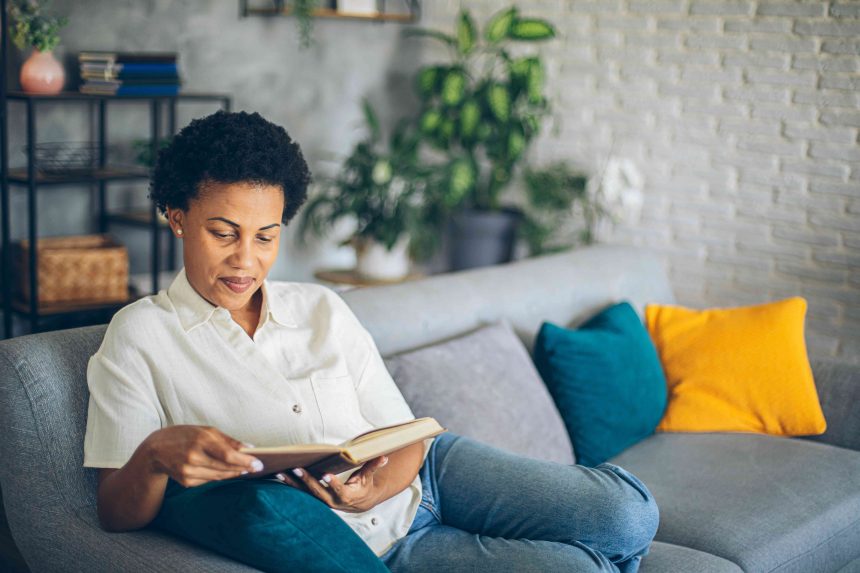If you’re like most Americans, you probably need some “me time” occasionally. In fact, a recent survey found that 56% of people think that alone time is vital to their mental health.
But according to a new study, not all solitude is created equal when it comes to enhancing well-being. While some forms of alone time can be restorative and even improve feelings of social connectedness, intense alone time like hiking solo in a forest may leave you feeling more isolated and less rejuvinated, researchers reported in the journal PLOS One in December.
This new research “suggests that the relationship between solitude and well-being is more complex than previously theorized,” Sophia Spencer, MSc, a social psychologist and psychotherapist based in London, told Health.
Morgan Ross, PhD, the study’s lead author and an assistant professor in the School of Communication at Oregon State University, wanted to explore how people perceive solitude in today’s hyper-connected world.
“We’re able to interact and reach out to others so easily,” Ross explained to Health. “In the past, solitude was seen as physical aloneness, but now we must differentiate between physical and social aloneness.”
Ross and his colleagues surveyed around 900 participants. Their average age was 62, and about two-thirds were women.
Researchers asked about their experiences with four “shades of solitude” categorized by access to both others and media:
- Base solitude: Alone but with access to media, like a phone, book, or music.
- Base solitude + inaccessibility: Alone and unavailable to others, but still with media access, like taking a forest walk while listening to a podcast.
- Base solitude + no media: Alone and available to others, such as sitting in a cafe or on public transit, but not engaging with any media.
- Total solitude: No access to media or others—think hiking in the woods or camping without cell service.
Surprisingly, total solitude wasn’t as restorative as researchers initially hypothesized. Instead, participants rated base solitude as the “most restorative and the least disconnecting to others,” Ross said.
These findings suggest that having access to familiar media while alone—regardless of whether you’re available or unavailable to others—can provide comfort and reduce feelings of isolation.
“It’s definitely one of the first studies I’ve seen that has said it’s better to be connected when you’re alone rather than not at all,” Spencer said. “What I see with my clients is most people feel completely overwhelmed by the level of social interaction we have today, both in person and on social media. So I assumed that their finding would be people want to be in total solitude.”
Most importantly, researchers found that a positive attitude toward solitude—whether base or total—played a significant role in how restorative people saw it. “People who think solitude is better for them experience more well-being the more they engage in it,” said Ross.
Notably, the amount of social interaction participants had during the day didn’t change their experience of solitude; even people with very social jobs didn’t find solitude more restorative than others.
Like any research, the study has its limitations. The findings relied on self-reported surveys, which captured participants’ perceptions of solitude rather than objective outcomes. Additionally, the average participant’s age was on the older side.
“There’s a huge difference in the way someone 61 uses phones and technology versus a 20-year-old today,” Spencer said. “We do not know whether these results would be replicated in a group of younger adults, who may relish the opportunity to be in total solitude.”
Despite the study results, the ideal type of solo activity varies from person to person. “I think there is a kind of choose-your-own-adventure aspect to solitude where you find different types that work best for you,” said Ross. What matters most, he added, is that you have a positive attitude toward your alone time to maximize its restorative benefits.
Spencer agreed, noting that figuring out what works may involve trial and error. “Take into account your diverse needs—like whether you’re an introvert, extrovert, neurodivergent—and your diverse living situation,” Spencer said.
Dia Parsons, a behavioral health expert at Alegria Collaborative, emphasized the importance of self-awareness throughout this process. She suggested asking yourself a simple question to help guide you: Is this activity or behavior recharging me or not? Without the awareness, she warned, solitude could stop being restorative and start becoming harmful.







